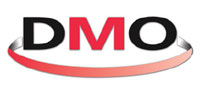Dynamic Movement Orthoses (DMO)
 Dynamic Movement Orthoses are a relatively new approach to managing abnormal tone, a neurological dysfunction. The aim is to improve functional abilities through the application of an orthosis designed to meet individual needs and objectives.
Dynamic Movement Orthoses are a relatively new approach to managing abnormal tone, a neurological dysfunction. The aim is to improve functional abilities through the application of an orthosis designed to meet individual needs and objectives.
Each orthosis is made to measure to achieve a snug fit as it is believed that increased pressure on certain muscle groups and improved proprioception via the snug fit of the orthosis leads to better awareness of the affected part of the body.
The resistance created by additional layers of reinforcing material adds a biomechanical influence to the improvement in control of movement.
As well as improved function from better posture, improved proximal / distal stability and reduced involuntary movements; other benefits may include pain relief, decreased associated reactions, easier transfers and improved therapy sessions. Over time, the desired effect would be to experience the improvement in function and control of movement when the orthosis is removed- i.e. carry over the effects experienced when wearing the orthosis. The onset of this carry over effect and the factors affecting its duration is dependent on the individual patient’s presentation and reaction to the treatment.
Patients with neurological dysfunction as a result of cerebral palsy, stroke (CVA), head injury, multiple sclerosis and other neurological conditions may benefit from wearing an orthosis.
Compliance is an essential part of this treatment both for those wearing the orthosis and those caring for the wearer – i.e. parents, caregivers, teachers, and therapists. Without acceptance of the daily regime of donning and doffing the orthosis, treatment will not work. Wearing regime and washing instructions are supplied with each orthosis. It is important to remember that even though this type of treatment intervention has been in use for several years, there are still areas of this technique that need further research to substantiate some of the effects seen so far.
All orthoses should be prescribed by a rehab team which includes but not limited to a Physician, Orthotist and Therapist who have been trained & certified to assess, measure, fit & review the orthosis.
Dynamic Movement Suits

Before and after a Dynamic Movement suit. The patient presented with choreo athetosis and a wind swept pattern.
Where improvement in proximal stability is required a suit may affect hip position & trunk stability and benefit patients with:
- Low underlying tone
- Hyper kyphosis of the thoracic spine
- Neuropathic Scoliosis
- Spasticity with underlying low tone
- Poor sitting ability
- Shoulder protraction linked with low tone
- Mobile Idiopathic Scoliosis
- Movements associated with athetoid and ataxic cerebral palsy
The individual orthosis designs allow prescribers to work with complex postural presentations such as neuropathic scoliosis. Here the aim is to maintain or reduce the curve using a layer(s) of material panels specifically positioned to encourage the spine to realign itself. A real alternative to more rigid bracing.
Dynamic Movement Shorts & Leggings

Where improvement in pelvic stability, hip & knee extension and the treatment of gait patterns is required, these orthoses may benefit patients with:
- Dipelgia- flexed pattern walking
- Low tone
- Hemiplegia
At fitting and after 2 ½ years in Dynamic Movement Orthosis leggings. The patient presented with diplegia and flexed pattern walking. At initial fitting some internal rotation was still evident, a second layer of reinforcement was applied. After 2 ½ years the leggings were withdrawn.
The aim of these orthoses may be to encourage a more upright standing position, reduce a ‘scissor’ gait / internal rotation of the leg and reduce walking effort.
Leggings may be used in conjunction with other orthoses such as Ankle Foot Orthosis, Dynamic Ankle Foot Orthosis and insoles.
Dynamic Movement Gloves

Before and after a Dynamic Movement glove.
Where improvement in upper limb function is required a glove may affect gross and fine motor skills and the posture of the arm:
- Abduct the thumb
- Extend and encourage control of fingers
- Encourage supination of the forearm
- Extend the elbow
- Extend the wrist
These orthoses have been used in the treatment of hemiplegia, quadriplegia, cerebral vascular accidents, trauma, and now in some cases of multiple sclerosis and parkinson’s disease.
The glove may feature a long or short sleeve depending on the involvement of the whole arm. As well as the functional improvements, the patient may benefit from a reduction in ‘dynamic’ contractures and the hemiplegic arm may be lower and straighter when walking.
Gloves may be used in conjunction with a Dynamic Movement Suit or Arm Sleeve.
